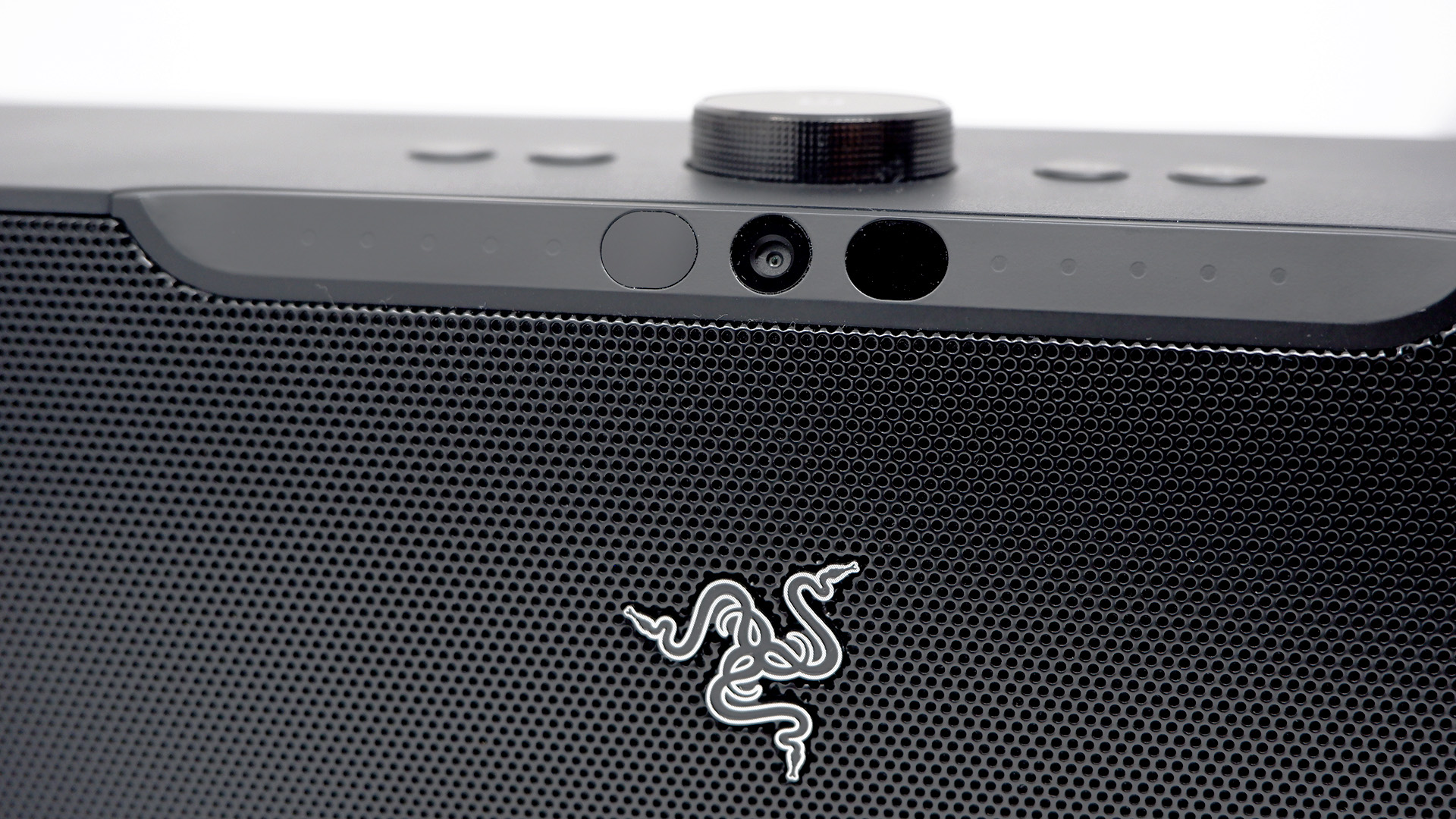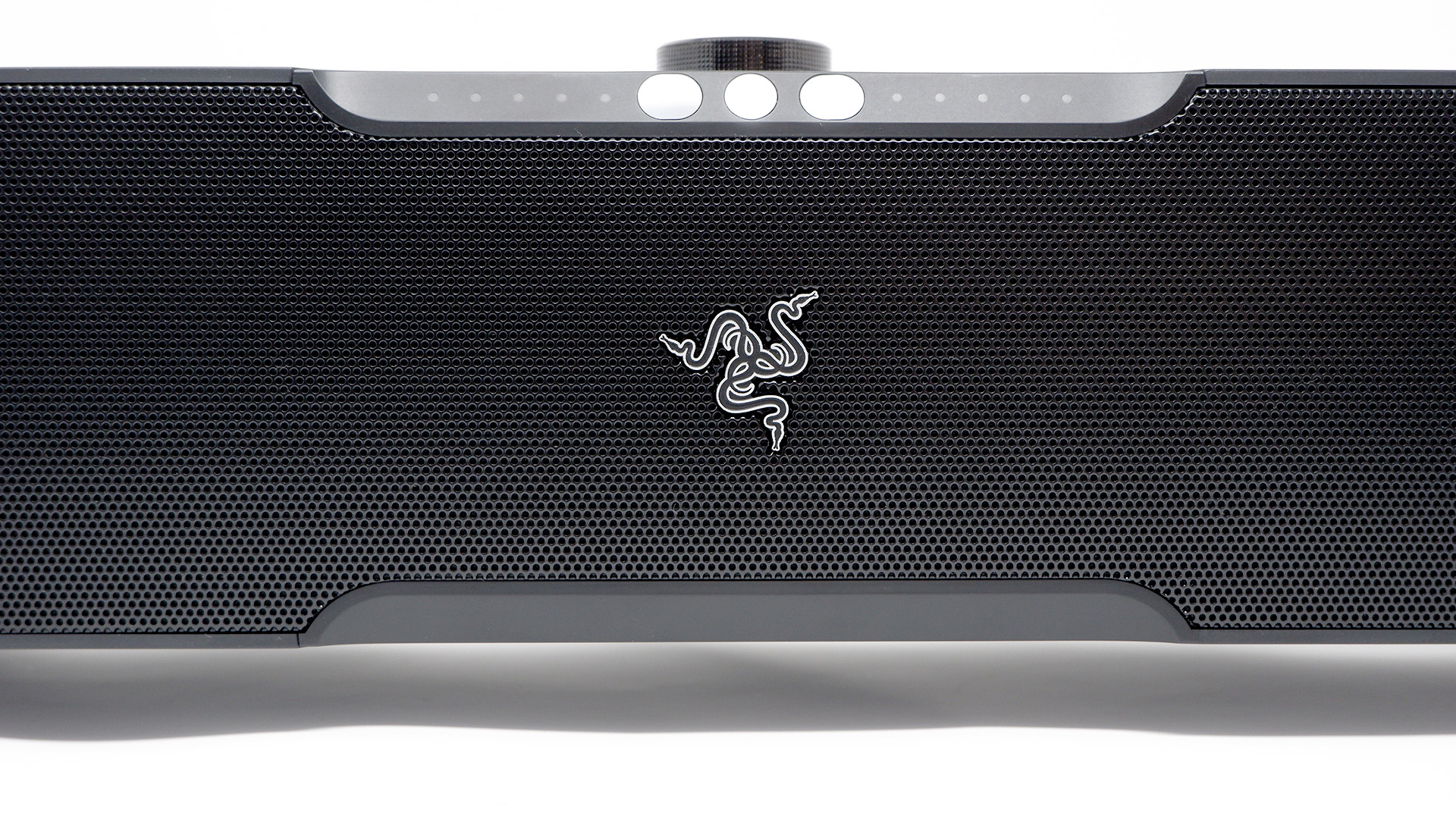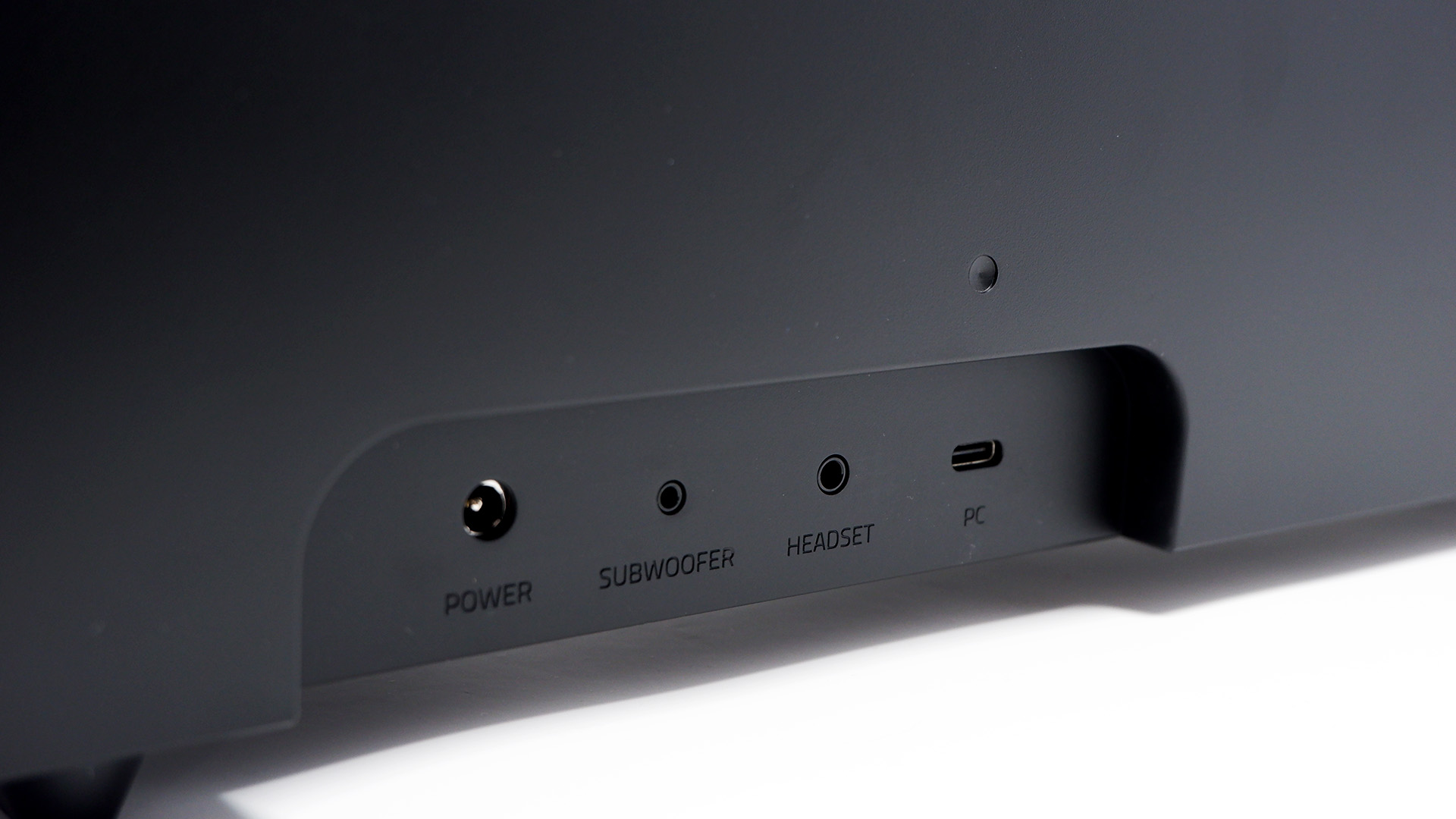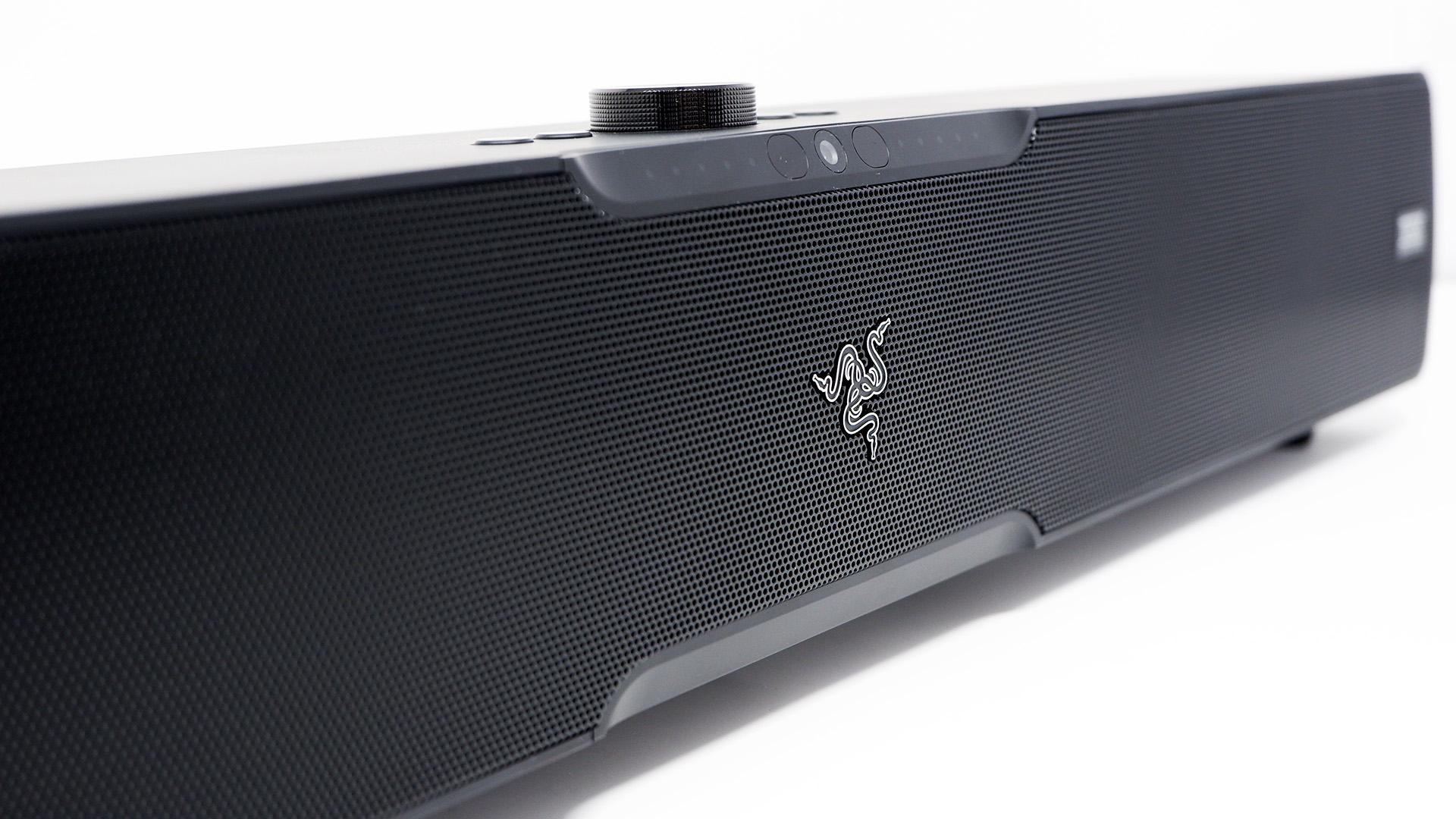Our Verdict
The Razer Leviathan V2 Pro achieves what it sets out to. Issue is that head-tracking appears a very costly venture.
For
- Gaming headset mode is genuinely good
- Head-tracking works well
- Easy to use
- Mobile and PC apps
Against
- Head-tracking comes at a massive cost
- Equaliser needs a tweak
PC Gamer's got your back
Razer promises a lot with the Leviathan V2 Pro. This beamforming, AI-powered, head-tracking soundbar is designed to wrap your ears with positional gaming audio. With how often 'AI' is thrown around these days I must admit I was a little sceptical of it all, but I'm actually pleasantly surprised by how well Razer's head-tracking system works in real-time.
Razer uses an integrated infrared camera to keep track of your head as you move about your desktop or scoot around in your gaming chair. The AI portion of the soundbar is responsible for deciding where your ears are at all times, which admittedly sounds more of a job for a clever algorithm than strictly AI, but sure, I'll bite. This data is then used in tandem with beamforming spatial audio to create either headphone-like positional audio or virtual surround sound speakers from the Leviathan's five-strong flat array of 2-inch tweeters.
Beamforming is often used to boost a wireless signal, such as a Wi-Fi signal from your router to your device. It uses different forms of interference to direct a signal more precisely at a device and works for all sorts of wireless signals, as evidenced by the Leviathan V2 Pro that uses it to direct an audio waveform directly at your ear holes.
The THX Spatial Audio Virtual Headset mode is of the most interest to me as a PC gamer. A gaming headset isn't always the most comfortable option, but it is the best for positional audio without going all-out on a full surround sound setup. Simply put: a gaming headset is champ for competitive gaming, so a speaker mode that mimics a headset sounded right up my alley.

Speakers: 5 x 2-inch tweeters, 1 x 5.25-inch subwoofer
Connectivity: Bluetooth, USB
Frequency response: 40Hz – 20,000Hz
App: Razer Synapse (PC), Razer Audio (mobile)
Lighting: 30-zone RGB
Price: $400/£400
The Virtual Headset mode causes the audio erupting from the Leviathan V2 Pro to sound as though it originates directly in front of me, and sound evenly across both ears, no matter where I sit in front of the soundbar. It's quite an odd experience. Even if you move from side to side, the soundbar does a fantastic job of tracking your head movements in real-time and keeping the audio stage pleasantly centred on your cranium. There is a slight delay between the audio shifting left and right along the soundbar, but it's less noticeable in actual use than when you're trying to hear the audio shifting around.
How best to explain it? The Leviathan V2 Pro's audio sounds like it emanates from wherever you are in relation to the length of the soundbar. Turn the feature off and stereo audio clearly emanates from the centre of the speaker, as you'd expect from any balanced soundbar. It means you can benefit from the Leviathan V2 Pro's audio in a way that's not entirely dissimilar to a gaming headset. It's not an exact analogue, but it's a good deal more positional and all-encompassing than what a traditional soundbar can offer. Only thing is you're missing the microphone for online gaming or calls, which means the gaming headset still remains the most solid all-rounder for PC gaming.

The Virtual Speaker mode is more of a match to virtual surround features on gaming headsets. That means it's definitely a more expansive soundstage, but at the expense of audio quality for any audio that's not properly mixed for surround sound. While just the Virtual Headset mode suffices for positional audio in games, in 5.1 surround sound tests you can better make out the rear 'speakers' with this mode enabled. It's not a mode I'd like to leave on all the time—it doesn't offer a universally pleasant experience—but for the odd movie it's entertaining enough to try it out. I'm not in the habit of watching all too many movies at my desk, though.
Audio quality is generally good on the Razer but it does fall into the pitfall that often catches out gaming-first audio products. The bass is a bit clumsy. This is easily fixed: you can set up your own equaliser in the software and tone back the bass a touch.
For how surprisingly impressive Razer's use of beamforming is, what does give me pause is the premium price associated with it. Razer's not pulling any punches here, and the Leviathan V2 Pro costs $400/£400. That's not only steep for a soundbar like this, but it's steep versus Razer's non-AI augmented but otherwise pretty much identical Razer Leviathan V2.

The standard Leviathan V2 may cut out some of the fun features, including head tracking, but it's also only $250. That's a lot more than some soundbars but it is less than the best PC soundbar, the Creative Sound Blaster Katana V2. We knocked that for its price tag and lack of optical and 3.5mm connections, and the same is true for the V2 Pro in those regards.

At least the Leviathan V2 Pro doesn't put a foot wrong in the more mundane aspects of its design. It comes with all the cables required to get it working with a PC, and it hooks up with both the Razer Synapse app and the Razer Audio app on mobile. I stuck with the mobile app for the most part, and once you're setup it seems to remember your device and get you right into the settings fairly quickly. You can also do a lot of the tweaking on the device itself, like switching between modes, adjusting the volume, or switching between Bluetooth and USB sources.
Also included in the V2 Pro package is a 5.25-inch subwoofer—a neat little number that's only let down is the requirement for a second outlet power cable. The soundbar itself also requires a power cable to an outlet, so it's going to gobble up a lot of outlet space if you don't have much to spare. At least the subwoofer is pumping out a lot of bass for the extra power—perhaps a little too much with the music mode turned on, but you can always tone it back.

It's a neat package, and the Leviathan V2 Pro is a great look into head-tracking and beamforming specifically as features for better gaming audio. What I had expected to be a bit of a gimmick has proven to be quite an impressive set of features in practicality.
Still, that price is just so tough to swallow, and those features aren't as game changing as I need them to be. Head tracking and virtual headphones are more than a party trick but they fall into a category of fun yet completely non-essential features. I don't want to pay $150 more for this instead of the standard Leviathan V2, an already pretty pricey soundbar for its spec, and that's unfortunately all there is to it.
Now, if Razer manages to squeeze this into a cheaper product, I'd be interested. But I have a feeling AI-powered infrared head-tracking is expensive for a reason.
The Razer Leviathan V2 Pro achieves what it sets out to. Issue is that head-tracking appears a very costly venture.

Jacob earned his first byline writing for his own tech blog. From there, he graduated to professionally breaking things as hardware writer at PCGamesN, and would go on to run the team as hardware editor. He joined PC Gamer's top staff as senior hardware editor before becoming managing editor of the hardware team, and you'll now find him reporting on the latest developments in the technology and gaming industries and testing the newest PC components.


